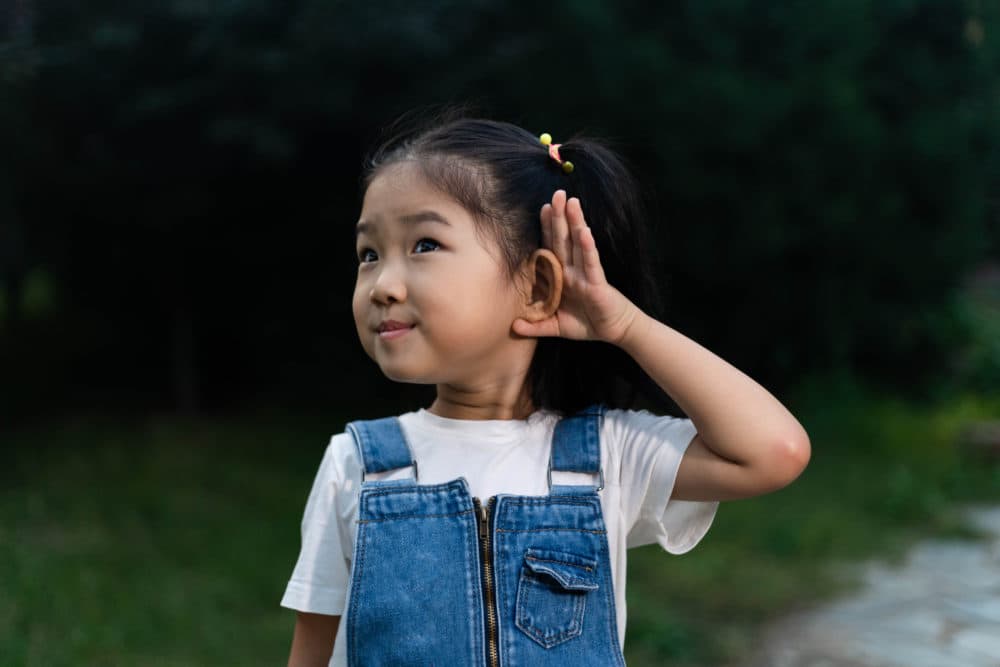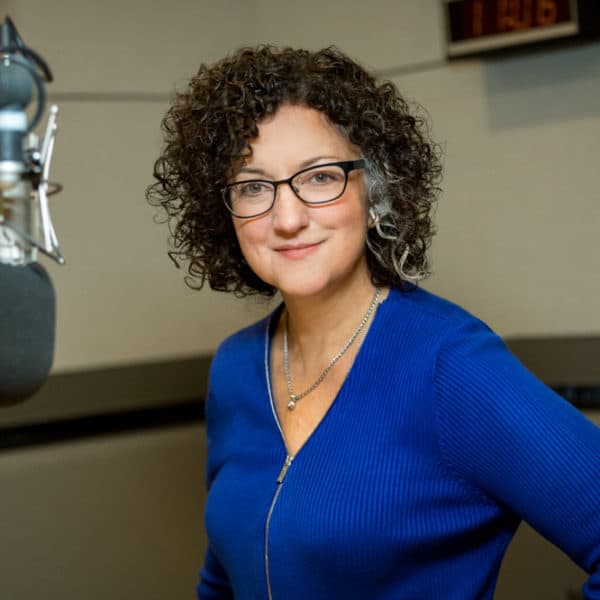Advertisement
Listen up! Author Monica Brady-Myerov explores how students can improve learning by enhancing listening
Resume
Editor's note: This segment was rebroadcast on Aug. 30, 2022. Find that audio here. And, since our original airing, Listenwise has become a subsidiary of UK-based ed-tech Boclips.
Teachers often ask an age-old question: How do you get students to learn better?
Monica Brady-Myerov believes the answer lies in getting kids to listen better.
The former public radio reporter left journalism to start Listenwise, a company that uses curated radio and podcast pieces to build better listeners in K-12 classrooms. She writes about her work in the book "Listen Wise: Teach Students To Be Better Listeners."
Back when Brady-Myerov worked at WBUR in Boston, she found out her third-grade daughter was struggling to learn to read. But she noticed that when they listened to NPR on the radio every morning, her daughter understood everything they heard.
That’s when Brady-Myerov started thinking about how many children who struggle with reading can listen at a higher level.
“That really launched me on this idea of taking all the great audio stories that are happening on public radio and in podcasts and getting them into the hands of teachers,” she says, “so that students like my daughter can succeed through listening.”
Listenwise looks for public radio stories that align with what kids learn in the classroom and captivate listeners in the first few seconds through building empathy or providing a sensory experience, she says.
People think of listening as a passive activity — but in reality, it requires activating many parts of the brain, Brady-Myerov says.
Neuroscientists call listening an immersive experience, she says, because the brain simulates what it’s like to be in that scenario, especially with radio pieces that incorporate rich ambient sound.
“Imagine if you can take students there really quickly and then illustrate a point about science that you're learning in a classroom,” she says. “That's what makes listening so powerful in learning.”
People don’t get better at listening with age but rather through practicing it as a skill, she says.
“Too many of our educators really have a professional blind spot when it comes to listening. They don't think that it needs to be taught. They focus more on the traditional skills, math and reading, and that's understandable,” she says. “But listening really is an essential skill that all effective learners need to know and improve.”
Teachers often ask Brady-Myerov how to get students to listen better — and she says they need to “help them exercise their listening muscle.”
With the internet pulling students in countless directions and shortening attention spans, kids need to practice listening now more than ever, she says.
To combat this, she says, teachers need tools to talk about the different kinds of listening: precise listening, descriptive listening and strategic listening. Once students feel in control of their ability to listen, they can learn that using this skill well can make remembering things, talking to friends and staying out of trouble with parents or teachers much easier.
Listening can help some students who struggle with reading; however, other kids struggle to listen. The activities on Likewise feature pictures, transcripts and other resources along with the audio to accommodate different types of students, Brady-Myerov says.
“That's a research-based, proven approach to improving literacy,” she says. “Listening and reading at the same time really improves reading.
The combination of decoding and language comprehension makes listening an essential part of learning to read, she says. Classrooms today can measure students’ reading level on a scale, but not their listening skills despite the close link between the two.
Teachers tell Brady-Myerov that better listening skills help students absorb and retain material better as well as get excited about coursework in ways such as learning background information on a book by listening to an interview with the author, for example.
For parents who want their young ones to learn better through listening, Brady-Myerov recommends listening to kids at the dinner table and giving them space to feel heard.
In her family, she gives her kids opportunities to share and listen by asking simple questions: “ ‘How was your day? Tell me one good thing. Tell me one bad thing that happened.’ Then we always ask them, ‘And what did you do that was nice for someone else?’ ”
Brady-Myerov teaches her kids to listen through example, something she says teachers can also do in the classroom. Teachers can talk about what good listening requires: eye contact, nodding, keeping your eyes off your phone, parroting back what the person says, asking follow-up questions.
“All of these things happen at our dinner table, too. And that is what has built, I think, a strength of listening among our daughter,” she says. “And I think it's easy for anyone to do, too.”
Community college students, we want to hear from you. Tell us about the challenges you're facing and how the pandemic has impacted your mental health.
Emiko Tamagawa produced and edited this interview for broadcast with Peter O'Dowd. Allison Hagan adapted it for the web.
Book excerpt: 'Listen Wise'
By Monica Brady-Myerov
This segment aired on December 15, 2021.

